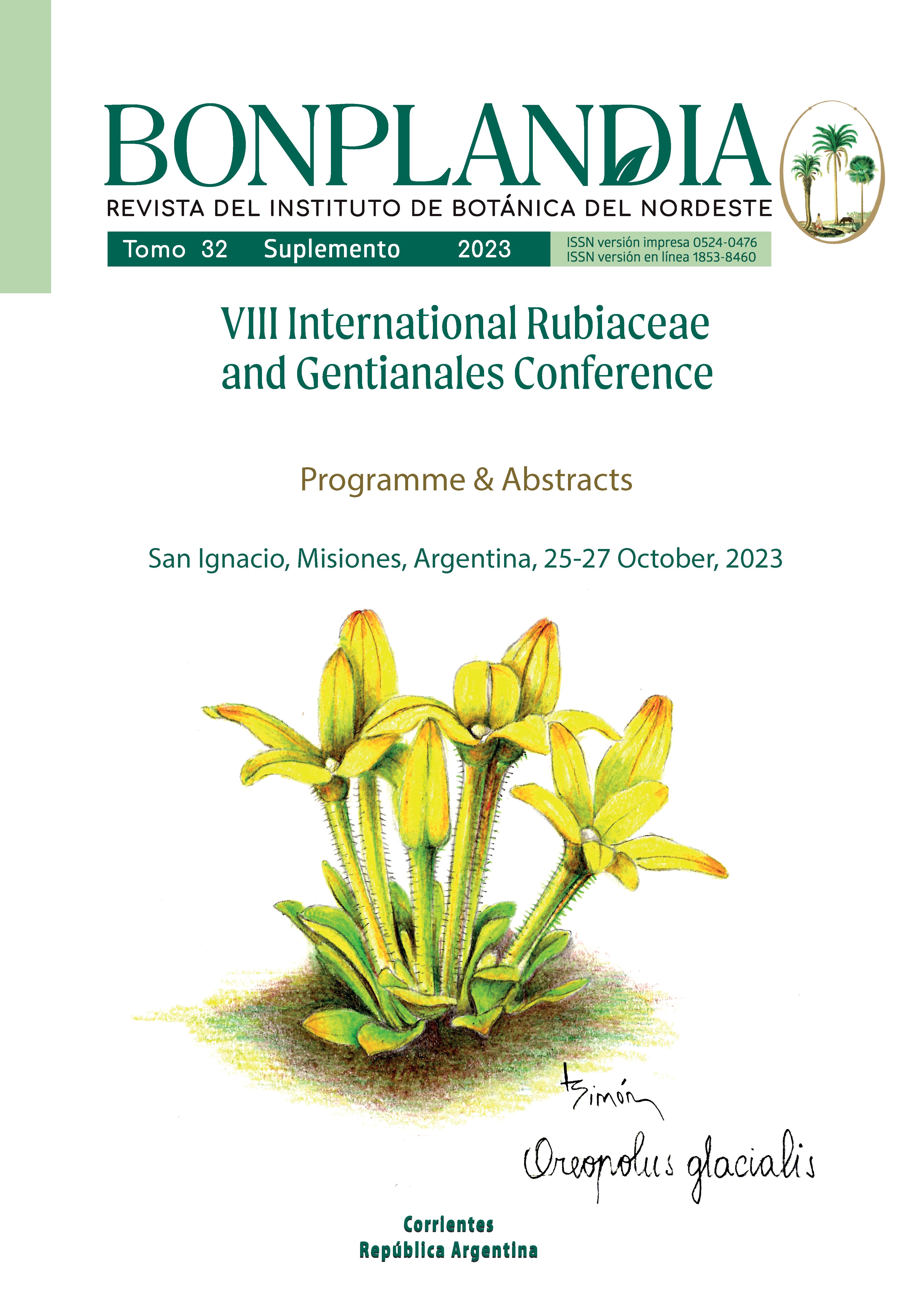Apocynaceae phylogenomics in Neotropical Orthosiinae I: the Scyphostelma harlingii clade
Resumen
The Andean-centred Orthosiinae in the Neotropical Apocynaceae harbours a tremendous, still understudied diversity o f plañís with small but intricate flowers that are currently classified in four genera: Jobinia (25 spp.), Monsanima (2 spp.), Orthosia (55 spp.), and Scyphostelma (>50 spp ). To investígate the evolutionary relationships within Orthosiinae and to reconstruct a comprehensive species phylogeny, we conducted taiget capture sequencing experiments (HybSeq) using Apocynaceae-specific probe sets. Exclusively using herbarium specimens, some of which are over a century oíd, and rigorous data processing, awell-supported phylogeny comprising approximately 78% of the known species is presented. Phylogenetic results confirm the generic relationships and the common origin of the species in Orthosiinae. Here, we particularly focus on the relationships of the recently described Scyphostelma harlingii group, whose species are placed in our phylogeny in a clade sister to the remaining Scyphostelma species. We measured 38 morphological traits to test for significant diíferences, mainly in floral characteristics between the species in the S. harlingii group and the remaining Scyphostelma species. We inferred that peduncles pedicels and corolla lobes in the group to be significantly larger than those in the rest of the genus. Overall, the S. harlingii group is characterised by distinctive laiger flowers, and larger inflorescences with long-filiform peduncles and pedicels that also occur on short and long shoots (whereas inflorescences occur only on short shoots in remaining Scyphostelma). Furthermore, we confirm the position of the recently described S. rotorum and S. solomonii, originally being suggested for morphological reasons to belong to the S. harlingii group. Our study provides further evidence on the evolutionary relationships o f Orthosiinae species and sheds light on their classification, particularly highlighting the S. harlingii clade.
Descargas
Publicado
Cómo citar
Número
Sección
Licencia
Derechos de autor 2023 Bonplandia

Esta obra está bajo una licencia internacional Creative Commons Atribución 4.0.
Declaration of Adhesion to Open Access
- All contents of Bonplandia journal are available online, open to all and for free, before they are printed.
Copyright Notice
- Bonplandia magazine allows authors to retain their copyright without restrictions.
- The journal is under a Creative Commons Attribution 4.0 International license.











.jpg)


